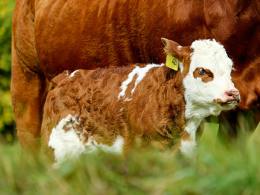Orf infection is a viral infection that affects the skin. It can be acquired through the handling of infected sheep or goats. Orf infection is a disease caused by Parapoxvirus, also known as contagious ecthyma, contagious pustular dermatitis, or scrappy mouth.
It is a zoonotic disease, which implies that is it an infection caused by animal to human.
Orf infection in animals
Orf infection is a viral infection that is common in sheep, goats, and ewes. One of the typical symptoms found in animals is lesion or sores found on the lips, muzzle, and, in some cases, the mouth.
In the early stage of the infection, lesions (which may look like blisters) develop into crusty scabs. Lesions may also occur on animal’s legs and teats or udders, especially when nursing their infected young ones. This may cause them to abandon their young ones; therefore, they may need a feeding bottle or tube feeding.
Older animals with sores on their lips or mouth may also require nutritional support. Animals can recover from the lesions in a month, except in rare cases where lesions get bacterial infections, and it becomes severe. Such cases are mostly found in breeds like the Boer goats. They are more likely to have more severe infections.
Orf infection can be transmitted from an infected animal to others. Scabs from the sores of an infected animal contain the virus, and thus an infection occurs when it comes in contact with a cut skin or an abrasion.
Nursing mothers’ teats may become infected through breastfeeding an infected young one. Any direct contact between animals — muzzle to muzzle or skin to skin — can result in the transmission of the virus between animals. Some animals may or may not have visible lesions but are still able to spread the virus.
Animals don’t develop immunity against Orf Infection; thus, they can be infected more than once in their life as much as whenever they come in contact with the virus. However, repeated infections after a year get less severe, and they tend to recover quickly.
Orf infection in humans
Orf Infection in humans occurs the same way an animal gets infected- through direct contact of broken or abrasive skin with the virus.
This can be through an infected animal or contaminated equipment. The infection in humans occurs on the skin’s top layer, usually on the finger, hands, or forearms.
The sores that occur from the Orf virus progresses through six stages. Each stage lasts for at least one week. The sores/lesions usually start as small red itchy and painful sores that later progress and become ulcerative in nature and appearance. There may be more than one lesion in some cases.
Other symptoms that may follow in the coming weeks of infection are mild fever, fatigue, and swelling of the infection area. They can be painful but usually resolve on their own without leaving any scars. However, the sores can be infected with bacteria if not properly managed.
Just like in animals, humans cannot develop endearing immunity to the Orf infection. One can be infected as many times as their broken skin comes in contact with the virus. Only that the subsequent infections won’t be as severe as prior cases and they tend to heal more quickly.
However, people with suppressed or compromised immune systems due to chemotherapy, or HIV can develop severe symptoms following orf virus infection, including large tumour-like lesions, progressive disease, development of multiple lesions, or multiform erythema reactions involving rashes on the mucous membranes and skin.
Activities that put humans at risk of infection include:
- Feeding or shearing infected sheep or goats
- Casual contact with infected animals
- Handling contaminated equipment such as a harness
- Being bitten by an infected animal
Prevention of orf infection in animals
Orf Infection is known to survive many environments, hence prevention can be difficult but not impossible.
The following are steps one can take to lessen the chances of contracting the virus:
- Isolate infected animals from uninfected ones until there is a satisfactory recovery
- Cuts, broken skin and abrasions are ways animals can contract the Orf Infection, therefore, removing equipment that may cause cuts will be beneficial
- Thorough cleaning and disinfecting of places where animal husbandry is carried out and standard feed troughs
Prevention in humans
- Avoid contacts with infected animals
- Always wear latex gloves when handling sheep or goats especially when you have an open cut or sore
- Wash your hands frequently and thoroughly with running water and soap for at least 30 seconds or use an alcohol-based hand sanitizer even when hands are not visibly soiled.
Treatment in animals
There is a prepared live virus marketed as vaccines that can be used. It is advisable to consult a veterinarian before using an Orf vaccine on livestock as humans can be infected.
It is advised that only the infected livestock should be vaccinated since the orf vaccine is a live virus preparation.
Treatment in humans
There is no particular treatment for Orf infection in humans as it usually clears up on its own after a few weeks.
Sores should be covered up with a tight water bandage and kept dry to prevent bacterial infection. Lesions can be loosely covered or uncovered during bedtime to accelerate healing.
There might be pain or fever (mild to severe). In cases where lesions are rapidly spreading, seek medical advice. Other infections bear a similar resemblance to the Orf infection but may be more serious. Therefore, it is advisable to consult your doctor.
Sources




